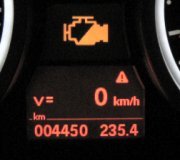You probably figured out that to get it out of limp mode you have to turn the ignition switch off and restart the engine. If it really is slippage in a clutch pack, you might be able to overcome it for a while by accelerating past the shift point, then letting up on the gas until it up-shifts and locks solidly into gear. What I mean is, suppose it always defaults to limp mode when shifting from second to third gear. If it likes to shift into third at, ... Oh, ... Say 30 mph, accelerate a little harder than than normal so it stays in second until 40 mph, then let off the gas to force it to up-shift to third. There won't be any torque on the clutch pack so it will have less tendency to slip.
That slippage is detected by comparing the input speed sensor's reading to that of the output speed sensor. When the two don't match for the specific gear ratio, it goes to limp mode.
You can also get an idea of the amount of clutch plate wear by viewing the "clutch volume index", (CVI). That is a set of four numbers that correspond to the number of ccs of fluid it takes to apply each clutch pack. An experienced transmission specialist can tell you what's normal and how much life can be expected yet. The problem is the computer constantly updates its shift schedules to overcome that normal wear and provide crisp shifts, until the day comes when it can't update enough. Years ago we had a year or two of mushy shifts to warn us that wear was taking place. With these computer-controlled transmissions we don't have that warning.
I should mention too that a lot of people think they're going to solve a problem by disconnecting the battery cable to reset something. What that will do is reset the Transmission Computer to the shift schedules programmed in at the factory. It can take a dozen shift cycles or a few miles of driving before the current needs are relearned and the memory is updated. Until that happens it could shift too harshly or it could be too soft and cause slippage. The best approach is to head straight to the transmission specialty shop to have the fault codes read. They might recommend rebuilding the transmission, but since that's what their business is, that's what they're hoping to tell you. Most shops are reputable and will repair rather than rebuild because they want to earn your repeat business, but you should also get a second opinion before committing to an expensive repair. A lot of mechanics are real good with cars but not good at communication skills. They might see from the CVI numbers that your transmission is going to need to be rebuilt very soon, and any other repair would be a short-term band-aid, but they should explain it to you that way. There could be a less expensive problem right now that a second shop fixes after the first shop recommended a rebuild. If you don't know why that first shop went with the expensive route, you'll be left thinking they were trying to rip you off when in reality they were looking at the bigger picture and what's in your best interest in the long run.
Monday, May 29th, 2017 AT 12:21 PM
(Merged)







